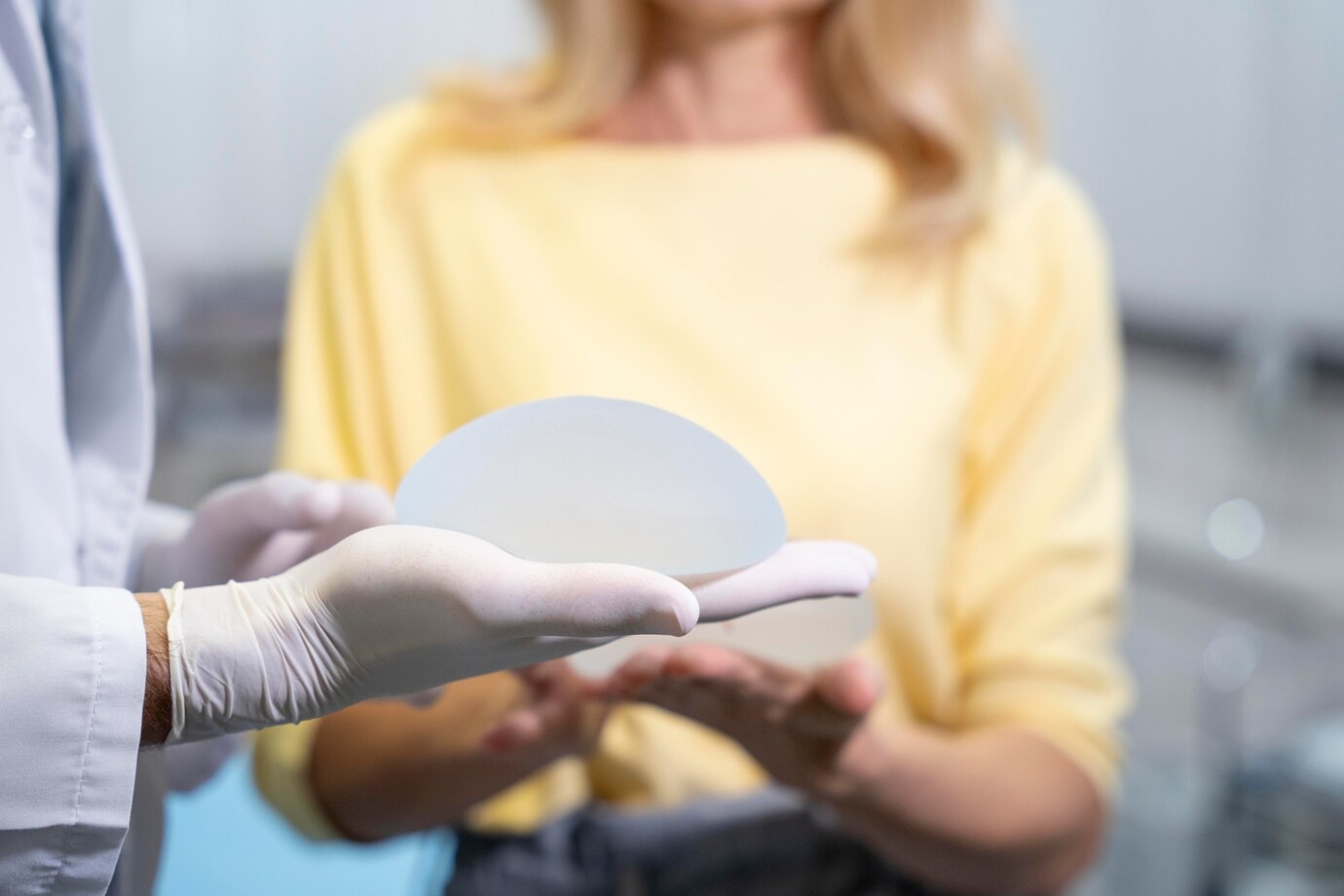A Beginner’s guide to Breast Implants
What Are Breast Implants?
Breast implants are medical devices that are used to augment the size and shape of a person’s breasts. They are typically made of silicone gel or saline (saltwater) and are surgically inserted into the breast tissue or chest muscles to enhance the appearance of the breasts. Breast implants can be used for cosmetic purposes, such as enhancing breast size or restoring breast volume lost after weight reduction or pregnancy. They can also be used for reconstructive purposes, such as after mastectomy for breast cancer or to correct congenital chest wall deformities. Our guide delves into the essence of breast implants, the variety available, the surgical journey, and the pathway to recovery, offering vital insights for those contemplating this life-changing decision.

Types of Breast Implants
Saline implants
Silicone gel implants

Preparing for Breast Implant Surgery
- Consultation: Before the surgery, you’ll have a consultation with your plastic surgeon. This is the time to discuss your goals, ask any questions you have, and understand the procedure’s risks and benefits.
- Medical Evaluation: Your surgeon will likely require a medical evaluation to ensure you’re healthy enough for surgery. This may include blood tests, a mammogram, or other tests.
- Stop Smoking: If you smoke, it’s important to stop smoking several weeks before and after surgery, as smoking can interfere with healing.
- Medication Adjustment: Your surgeon may advise you to stop taking certain medications or supplements that can increase the risk of bleeding, such as aspirin, ibuprofen, or certain herbal supplements.
- Arrange for Help: You’ll need someone to drive you home after surgery and stay with you for at least the first night, as you may feel groggy from anesthesia.
- Prepare Your Recovery Space: Set up a comfortable recovery area at home with plenty of pillows, blankets, and entertainment to keep you occupied while you rest.
- Follow Preoperative Instructions: Your surgeon will provide specific instructions on fasting before surgery and what to wear to the surgery center.
- Arrange for Time Off: Plan to take time off work or other responsibilities to allow for a proper recovery period.
- Postoperative Care: Follow your surgeon’s instructions carefully for caring for your incisions, wearing any supportive garments, and attending follow-up appointments.
- Emotional Preparation: H3 Understand that breast implant surgery can bring up various emotions. It’s normal to feel excited, anxious, or even a bit overwhelmed. Talking to your surgeon or a mental health professional can help.
Remember to discuss any concerns or questions you have with your plastic surgeon. They will provide you with personalized advice to ensure you’re well-prepared for your breast implant surgery.
The Breast Implant Surgery Process
The breast implant surgery process typically involves several key steps, from the initial consultation to post-operative care. Here’s an overview of what you can expect during each stage:
Initial Consultation: During your initial consultation with a plastic surgeon, you will discuss your goals for breast augmentation, medical history, and any questions or concerns you may have. Your surgeon will evaluate your breast size, shape, and skin quality to determine the best approach for your surgery.
Preoperative Assessment: Before your surgery, you will undergo a preoperative assessment, which may include blood tests, a mammogram, and other tests to ensure you are in good health for surgery.
Surgery Day: On the day of your surgery, you will arrive at the surgical facility and meet with your surgical team. Anesthesia will be administered to keep you comfortable during the procedure.
Incision: Your surgeon will make incisions in the predetermined locations, which may be in the crease under the breast, around the areola, or in the armpit. The choice of incision location will depend on your anatomy and the type of implant being used.
Implant Placement: The implants may be placed either behind the breast tissue (subglandular) or behind the chest muscle (submuscular), depending on your surgeon’s recommendation and your desired outcome.
Closing Incisions: Once the implants are in place, your surgeon will close the incisions with sutures, skin adhesive, or surgical tape. Drains may be placed to remove excess fluid during the initial healing phase.
Recovery: After surgery, you will be taken to a recovery area where you will be monitored as you wake up from anesthesia. You may experience some discomfort, swelling, and bruising, which is normal.
Postoperative Care: Your surgeon will provide you with specific instructions for caring for your incisions, managing pain, and wearing a supportive bra. Follow-up appointments will be scheduled to monitor your healing progress.
Results: It may take several weeks for swelling to subside and for your final results to be visible. Most patients are able to return to normal activities within a few weeks, although strenuous exercise should be avoided for a few weeks.
Long-Term Follow-Up: Your surgeon will schedule regular follow-up appointments to monitor your breast health and the condition of your implants. It’s important to attend these appointments to ensure your implants are functioning properly and there are no complications.
It’s important to discuss the specifics of your breast implant surgery with your plastic surgeon, as the details may vary based on your individual anatomy and goals.

Recovery and Aftercare
Breast Implant Illness
Breast Implant Revision and Removal
Emotional and Psychological Impact
Breast implants before and after photos are a common resource used by individuals considering breast augmentation surgery. These photos showcase the transformative effects of breast implants, illustrating how the procedure can enhance breast size, shape, and symmetry.
Breast Implants Before and After
It’s important to note that while these photos can be informative, individual results may vary. Factors such as implant type, size, and placement, as well as individual anatomy, can all impact the final outcome of breast augmentation surgery.